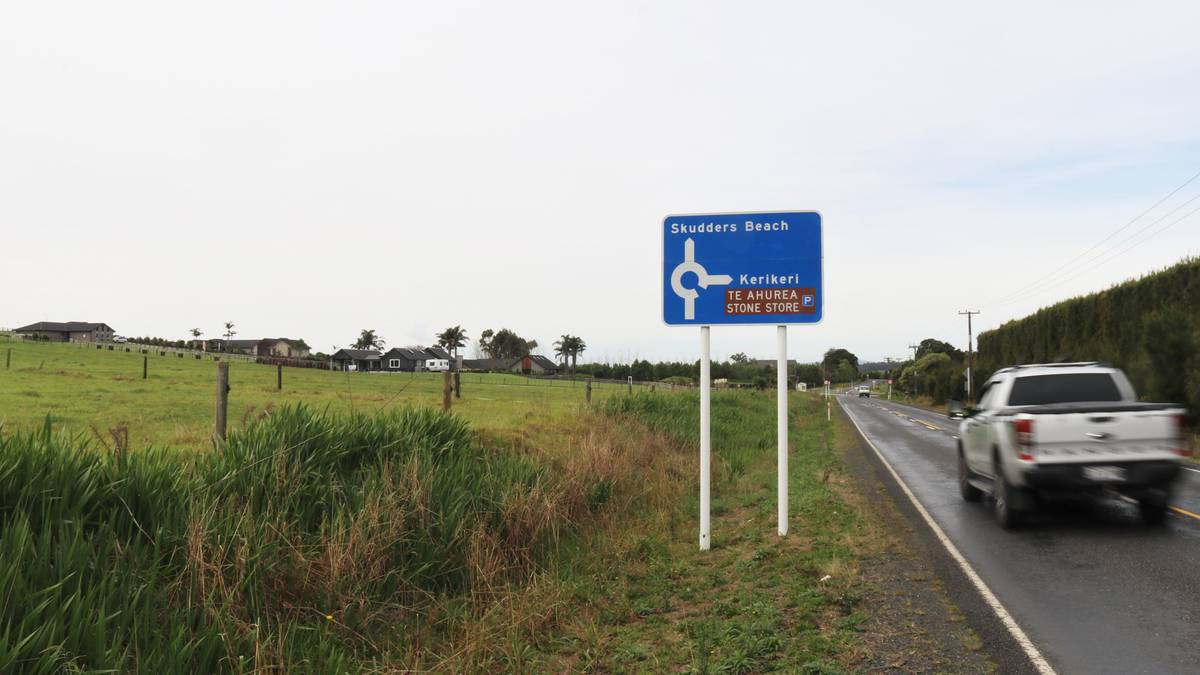Commissioners have rejected plans for a 124-lot subdivision on Kerikeri’s rural fringe. Photo / Peter de Graaf
A proposed 124-lot subdivision on the outskirts of Kerikeri would “irreversibly alter” its surroundings and “tip the balance” from a natural, rural area to one that was largely urban, commissioners have found.
Neil Construction has
applied to subdivide 68ha of farmland bounded by Kapiro Rd, Redcliffs Rd and Rangitane River, just north of Kerikeri. The site, known locally as Tubbs Farm, adjoins an earlier, lower-density stage of the Rangitane River Park development.
A publicly-notified resource consent process was required because the proposal breaches a number of Far North District Council development rules.
That ended in two days of hearings at the Turner Centre late last month with independent commissioners Rob van Voorthuysen and Fraser Campbell hearing evidence from the developers and opponents.
In a decision released this week, the commissioners turned down the proposal in its entirety.
They said it would result in “a marked change in the existing landscape and character of the site from rural to a character that is predominantly built and residential”.
The commissioners rejected the developer’s description of the subdivision as “rural residential” because the lot size, combined with narrow road frontages and the space needed for wastewater dispersal fields, meant rural activity would be impossible.
They noted the proposed stages 3-5 would have a density three times higher than the existing stages 1 and 2, giving it a “distinctly urban character”.
The subdivision’s visual impact would be heightened because most house sites were on a prominent ridge, instead of being clustered in areas that minimised their effect on the site’s natural character.
/cloudfront-ap-southeast-2.images.arcpublishing.com/nzme/6FR2JRAATLWCHDZ5LX3EA45OVU.jpg)
The commissioners also referred to a letter from Ngāti Rēhia in which the local hapū expressed concerns about the loss of quality soils, the “inappropriate scale” of the development for its location, the effect on kiwi, and the potential for further degradation of Rangitane River and Kerikeri Inlet.
However, the commissioners found wetlands on the site would not be adversely affected by the development and could even be enhanced.
The wetlands had been degraded by decades of farm activity but were still among “the best of what’s left” in the Bay of Islands.
One of the chief objections raised in a joint submission by community groups Vision Kerikeri, Friends of Rangitane Stream and Kapiro Residents Association was the loss of high-quality horticultural land.
Land management consultant Ian Hanmore, a Vision Kerikeri witness cited by the commissioners, said the site contained 46ha of “highly versatile” class 2 land ideal for horticulture.
Class 2 land was a “rare and strictly finite” resource that covered little more than 2 per cent of the Far North.
Nine per cent of Northland’s prime soil, much of it in the Kerikeri area, had been subdivided in the past six years, he said.
/cloudfront-ap-southeast-2.images.arcpublishing.com/nzme/GMFKRCAGG7P6O5QDAJ6CUYGY54.jpg)
Planner Burnette O’Connor, another Vision Kerikeri witness, said the “development will irreversibly alter the character of the site and surrounding area, tipping the balance from an area with natural and rural character values to an area where the character will be dominated by living activities”.
The commissioners did not, however, share the concerns of Vision Kerikeri and Landing Rd residents about increased traffic. The area’s existing roads, including the one-lane Landing Rd bridge, had sufficient capacity, they said.
Neil Construction bought the former dairy farm, totalling 124ha, from the Tubbs family in 2007. The eastern half has already been developed.
The company is part of the Callander Group, which is registered in the British Virgin Islands, a Caribbean tax haven.
The proposal attracted eight submissions when it was publicly notified in 2020. Three were neutral and five were opposed.
An independent report prepared earlier for the Far North District Council also concluded the development should not go ahead.
One of the reasons the proposal breaches council planning rules is the section size, which ranges from 3000sq m to 4ha. The minimum in the Coastal Living Zone is 5000sq m.
Because all aspects of the development were bundled together in a single application, the commissioners could not accept some parts of the plan and reject others.
Neil Construction has been approached for comment. The company is expected to appeal the decision to the Environment Court.
Vision Kerikeri chairwoman Jo Lumkong said the decision was “really heartening”.
“It shows that when community works together our voices are heard, we’re able to challenge big business and unsuitable development. It’s a crucial time to continue working together to realise smart, empathetic planning for our town in this time of growth,” she said.
Vision Kerikeri spokeswoman Melanie Miller said the group, along with other submitters and community members, would explore alternative uses for the site.
Options included environmentally sound, no-spray horticulture and a wildlife protection area.
Vision Kerikeri would also continue to call for the site to be included in the Horticulture Zone, a newly created land use zone in the council’s District Plan.




